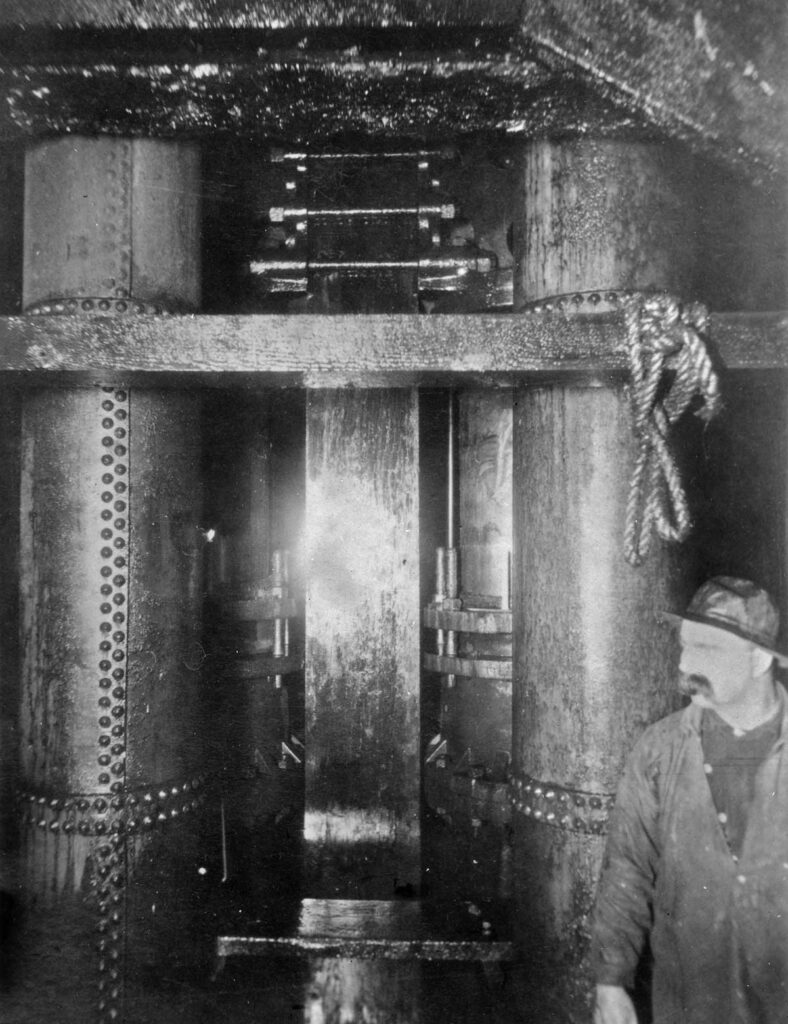Cornwall lies at the southwestern tip of Great Britain. Though it’s administered as a county of England today, the indigenous Cornish people are a Celtic nation—like the Irish and the Scottish—with their own distinct identity, language, and culture. More than 100,000 Cornish people arrived in the United States between 1815 and 1915 (a relatively huge number, given that a census recorded that Cornwall had fewer than 400,000 residents in 1861), bringing their unique identity and traditions with them.[i]
Many of these immigrants decided to leave Cornwall because of economic troubles facing the region. One of the most important industries in Cornwall at the turn of the nineteenth century was the mining industry, but by this point it had already begun declining, and it had almost completely vanished by 1950.[ii] The disappearance of the Cornish mines forced many miners to look abroad for work.
The global dispersal of Cornish miners had a significant impact on mines around the world, as they brought their experience and expertise with them. Many settled in the American West, where they participated in the California Gold Rush and helped establish mines throughout the region.[iii]
Naturally, Cornish miners were drawn to Park City. They began arriving in 1871 and became one of the largest cultural groups in the mining town.[iv] Their impression on the new community was pronounced. They brought “expressive lingo” and Cornish cuisine to the town, and they were widely reputed for their competency working underground.[v]

Credit: Park City Historical Society & Museum, Jordanelle Special Service District Collection
In the 1880s, a group of Cornish and Cornish-American arrivals became the first settlers of Rossie Hill, establishing their own bastion in the growing town, overlooking Main Street from the east.[vi] It was partially at their insistence that the large China Bridge was constructed between this hill and Main Street; like many other white residents of the town, they were prejudiced against the Chinese immigrants who resided between these two areas, and they demanded the bridge’s construction to avoid Park City’s Chinatown.[vii] Tension also existed between the Cornish and Park City’s Irish population, between whom fights were sometimes seen, perhaps because of competition over jobs.[viii]
Predictably, the Cornish had a strong influence, both technically and culturally, on Park City’s mines. The famous Cornish Pump, built to alleviate flooding in the Ontario Mine, was the product of Cornish mining expertise, as its name would suggest. Though its designer, W. R. Echart, was not Cornish himself, it was derived from earlier machines constructed in Cornwall, and Cornish engineers were hired to supervise the pump’s construction.[ix] This was merely one local example of the effect the Cornish diaspora had on mines like the Ontario all over the globe.
They also brought traditional beliefs and superstitions about mining into Park City. They introduced other Parkites to the legend of the “Tommyknockers,” underground creatures alternatively described as elf-like beings or the ghosts of dead miners, who were known for stalking mines and “punishing greed and rewarding good behavior.”[x] Non-Cornish Parkites seem to have fervently adopted belief in the Cornish Tommyknockers. Unusual noises, especially anything that sounded like knocking, would be attributed to the Tommyknockers by fearful miners. Workers in the Silver King Mine also referred to knocking signals they used as “Tommy knocking,” reflecting the importance of Cornish superstitions among all miners there, regardless of individuals’ backgrounds.
The Park City Museum is hosting a free lecture on Cornish Miners on October 25 from 5 to 6 p.m. at their Education and Collections Center at 2079 Sidewinder Drive.
[i] Ronald M. James, “Defining the Group: Nineteenth-Century Cornish on the North American Mining Frontier,” in Cornish Studies: Volume Two, ed. Phillip Payton (Exeter, UK: University of Exeter Press, 1994), 33.
[ii] Bethan Coupland and Nikolas Coupland, “The Authenticating Discourses of Mining Heritage Tourism in Cornwall and Wales,” Journal of Sociolinguistics 18, no. 4 (September 2014): 499.
[iii] Bernard Deacon and Sharron Schwartz, “Cornish Identities and Migration: A Multi-Scalar Approach,” Global Networks 7, no. 3 (July 2007): 293.
[iv] “Park City Gets Nice Promotion from Columnist in California,” Park Record, October 22, 1970, 4, https://newspapers.lib.utah.edu/ark:/87278/s6q252vn/8137217.
[v] Katherine C. Reynolds, “Hard Times, Good Times—A Town with a Checkered Past,” Park Record, March 8, 1984, 55, https://newspapers.lib.utah.edu/ark:/87278/s6hm99gs/8272293.
[vi] “Rossie Hill and the China Bridge,” Park Record, June 21, 1984, 11, https://newspapers.lib.utah.edu/ark:/87278/s6226vsr/8247196.
[vii] Reynolds, “Hard Times,” 55; “Rossie Hill,” 11.
[viii] George A. Thompson and Fraser Buck, Treasure Mountain Home: Park City Revisited (Salt Lake City, UT: Dream Garden Press, 1993), 13.
[ix] Ibid, 18.
[x] Ronald M. James, “Knockers, Knackers, and Ghosts: Immigrant Folklore in the Western Mines,” Western Folklore 51, no. 2 (April 1992): 7.